
schoolphysics
Dwarf Planet Pluto and the other dwarf planets are much smaller than the Earth and other planets. Pluto - As a dwarf planet, Pluto has a radius of approximately 1,188 km (738 mi) and a diameter of 2,376 km (1,476 mi). It is about 0.18 times the size of Earth. Comparative Table of Size of Planets

IN ORDER Lerne Sefe
With a mean diameter of 12,756 km (7926 mi), Earth is the largest terrestrial planet in the Solar System and the fifth largest planet overall. However, due to flattening at its poles (.

Size of in Order Diameter of Comparison
10 Things Our solar system is made up of a star, eight planets, and countless smaller bodies such as dwarf planets, asteroids, and comets. Our solar system orbits the center of the Milky Way galaxy at about 515,000 mph (828,000 kph). We're in one of the galaxy's four spiral arms.
.jpg)
FileDiameters of terrestrial bodies of the solar system chart).jpg Wikipedia
The gas planets are composed primarily of hydrogen and helium and generally have low densities, rapid rotation, deep atmospheres, rings and lots of satellites. by size: small planets: Mercury, Venus, Earth, Mars. The small planets have diameters less than 13000 km. giant planets: Jupiter, Saturn, Uranus and Neptune.
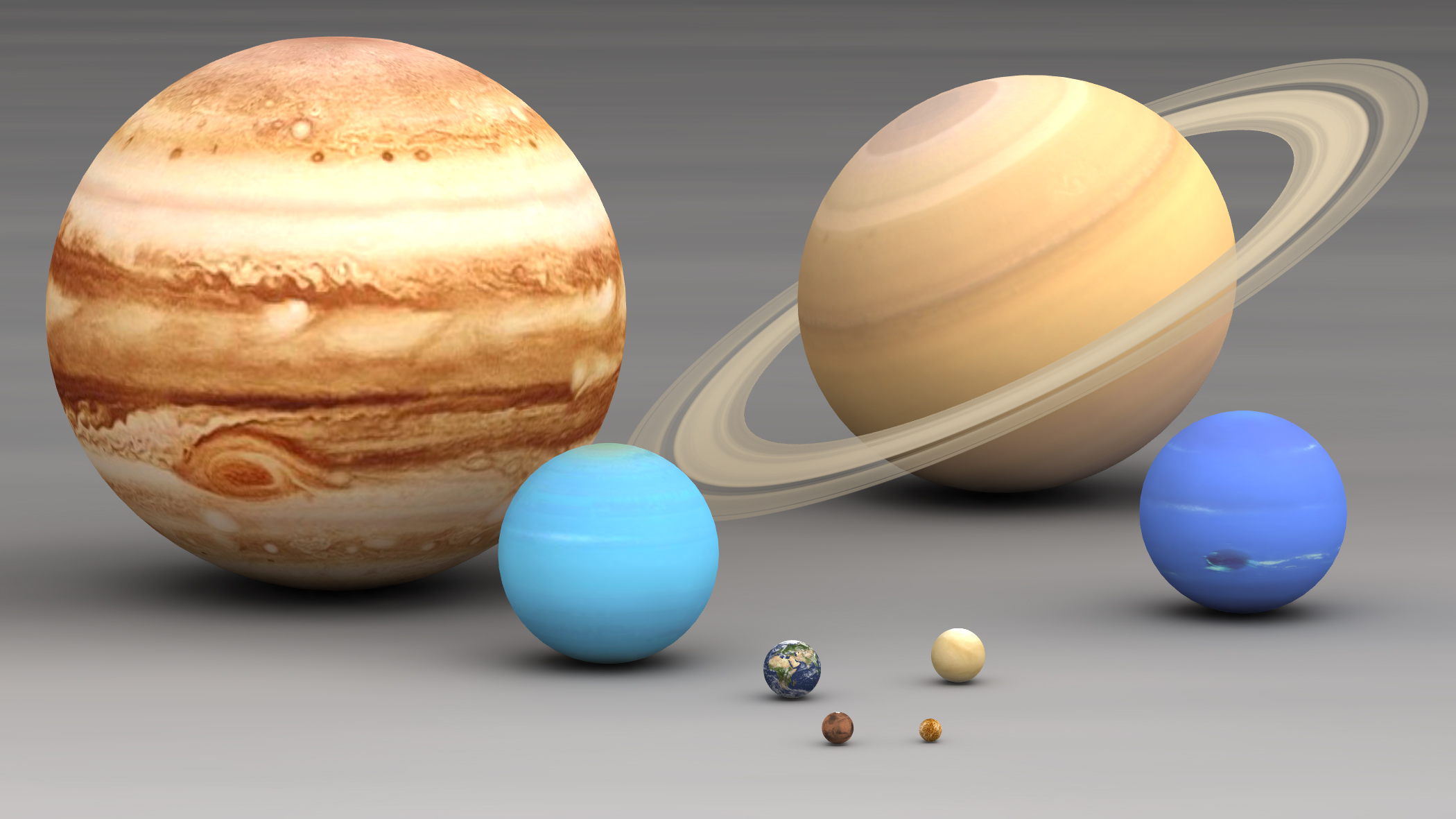
FileSize comparison.jpg
Distance from the Sun to planets in astronomical units (au): Planet Distance from Sun (au) Mercury 0.39 Venus 0.72. Uranus 19.2 Neptune 30.06 Diameter of planets and their distance from the Sun in kilometers (km): Planet Diameter (km) Distance from Sun (km) Sun 1,391,400 - Mercury 4,879 57,900,000 Venus 12,104 108,200,000 Earth 12,756.
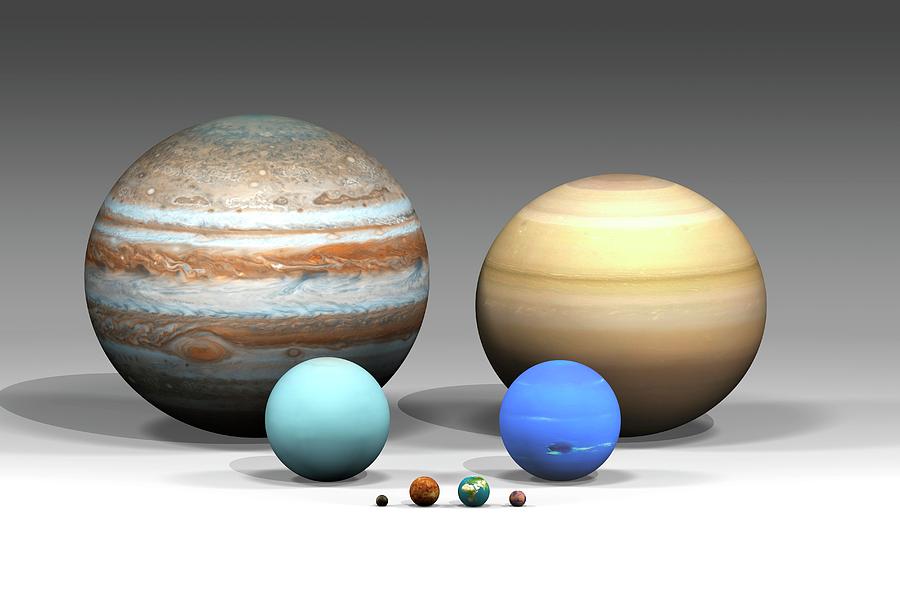
Sizes Of Solar System Compared Photograph by Science Photo Library Pixels
Each planet in our solar system possesses a distinct diameter, which is a measure of its size or width. For instance, Jupiter, the largest planet, boasts a diameter of approximately 86,881 miles (139,820 kilometers). Saturn follows closely behind with a diameter of around 72,367 miles (116,464 kilometers). In contrast, the inner planets, such.
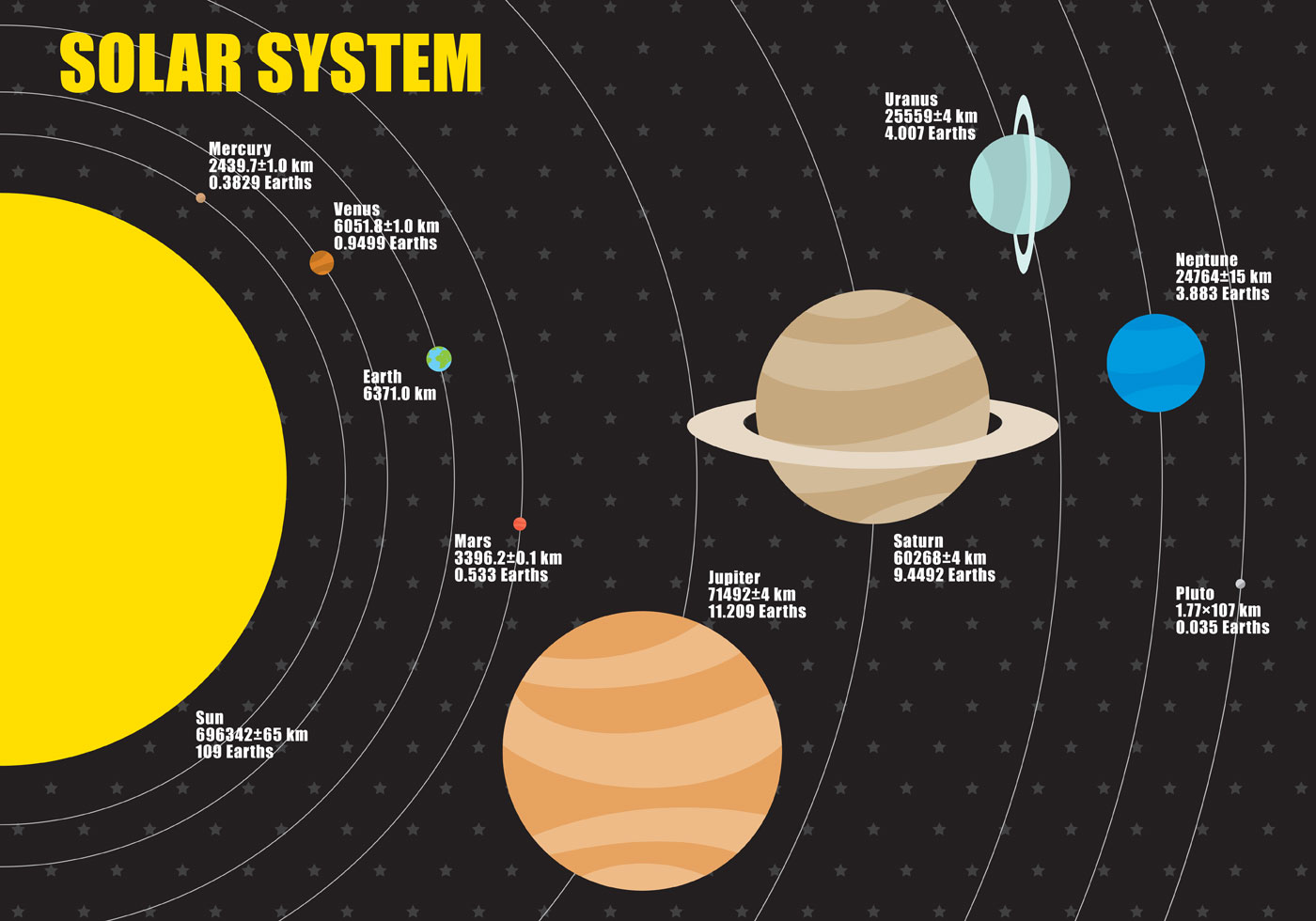
Sizes Infographic Vector 94799 Vector Art at Vecteezy
Jupiter (69,911 km / 43,441 miles) - 1,120% the size of Earth Saturn (58,232 km / 36,184 miles) - 945% the size of Earth Uranus (25,362 km / 15,759 miles) - 400% the size of Earth
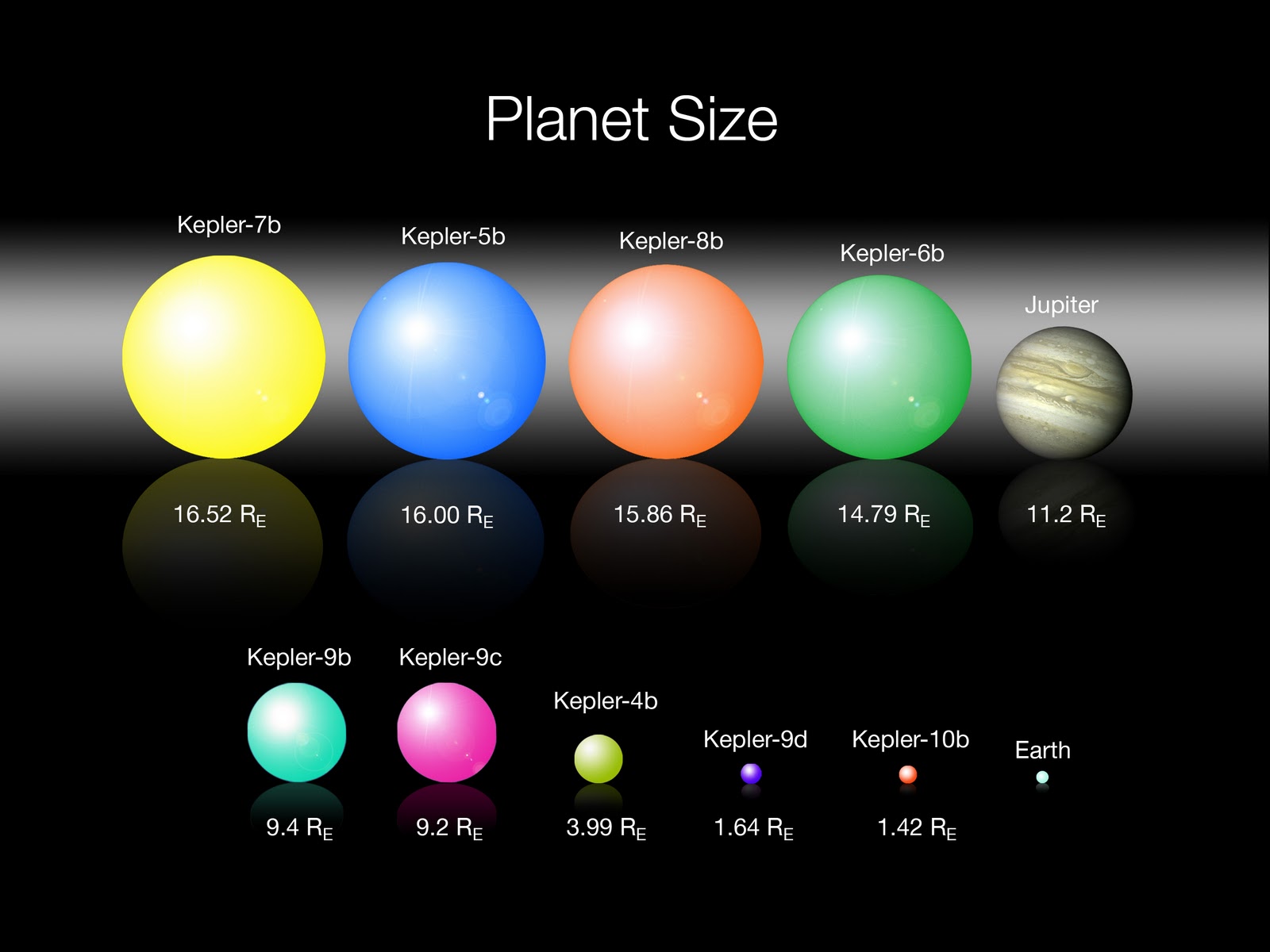
Size Order
Solar System The Solar System [c] is the gravitationally bound system of the Sun and the objects that orbit it. [4] The largest of these objects are the eight planets, which in order from the Sun are four terrestrial planets ( Mercury, Venus, Earth and Mars ); two gas giants ( Jupiter and Saturn ); and two ice giants ( Uranus and Neptune ).
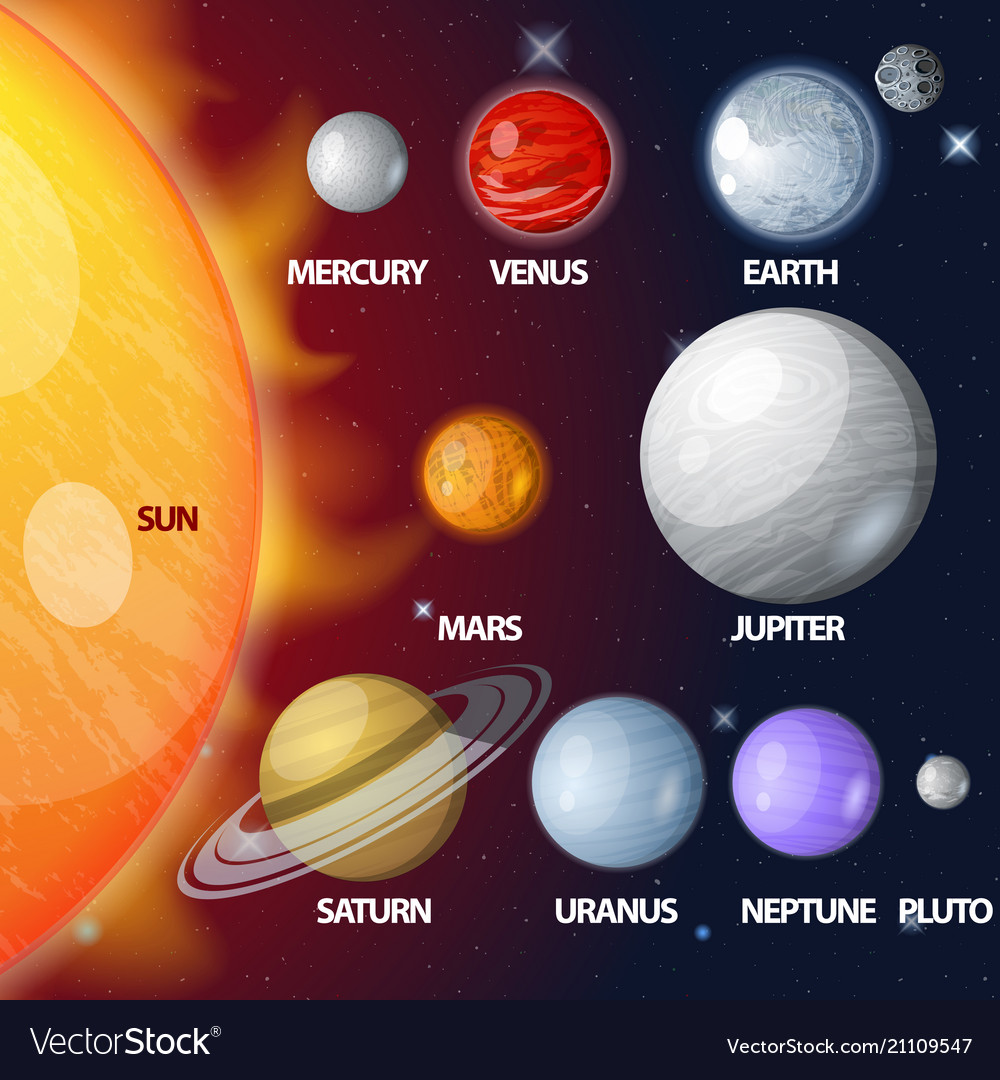
of the solar system exhibited by size and Vector Image
Diameter (km or miles) - The diameter of the planet at the equator, the distance through the center of the planet from one point on the equator to the opposite side, in kilometers or miles. Density (kg/m 3 or lbs/ft 3 ) - The average density (mass divided by volume) of the whole planet (not including the atmosphere for the terrestrial planets.

The Solar System Modeling the relative sizes of the Perkins eLearning
Author/Curator: Dr. David R. Williams, [email protected] NSSDCA, Mail Code 690.1 NASA Goddard Space Flight Center Greenbelt, MD 20771 +1-301-286-1258

The Size of and moons, Jupiter
The three-dimensional interactive below shows the sizes of the planets relative to Earth as well as interesting facts about the planets. Rick Livingston The solar system has two main types of planets. The inner planets—Mercury, Venus, Earth, and Mars—have rocky compositions.
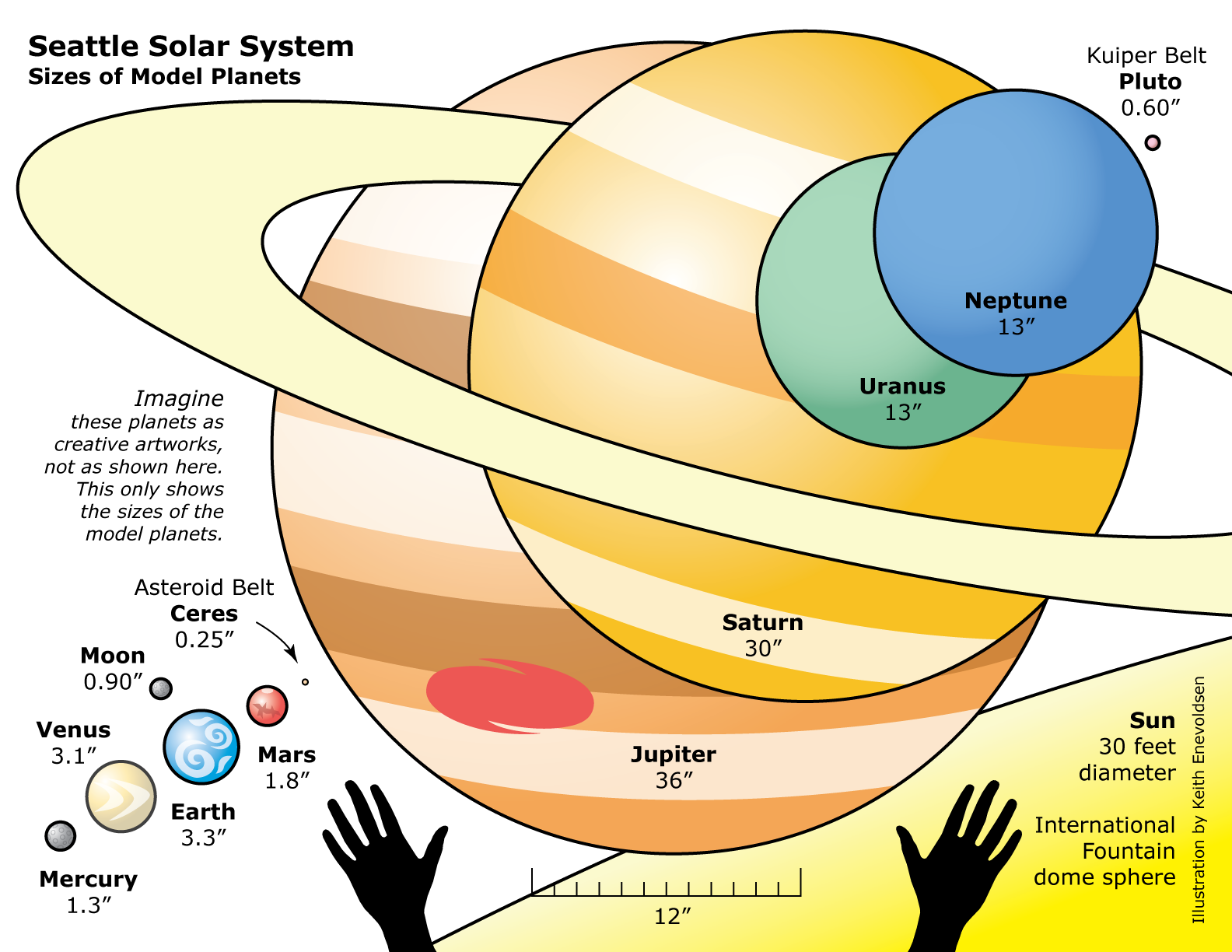
Seattle Solar System
Our solar system has eight planets, and five dwarf planets - all located in an outer spiral arm of the Milky Way galaxy called the Orion Arm, or Orion Spur. It can be divided into three regions: the inner solar system, the outer solar system, the Kuiper Belt, and the Oort Cloud. The inner, rocky […]
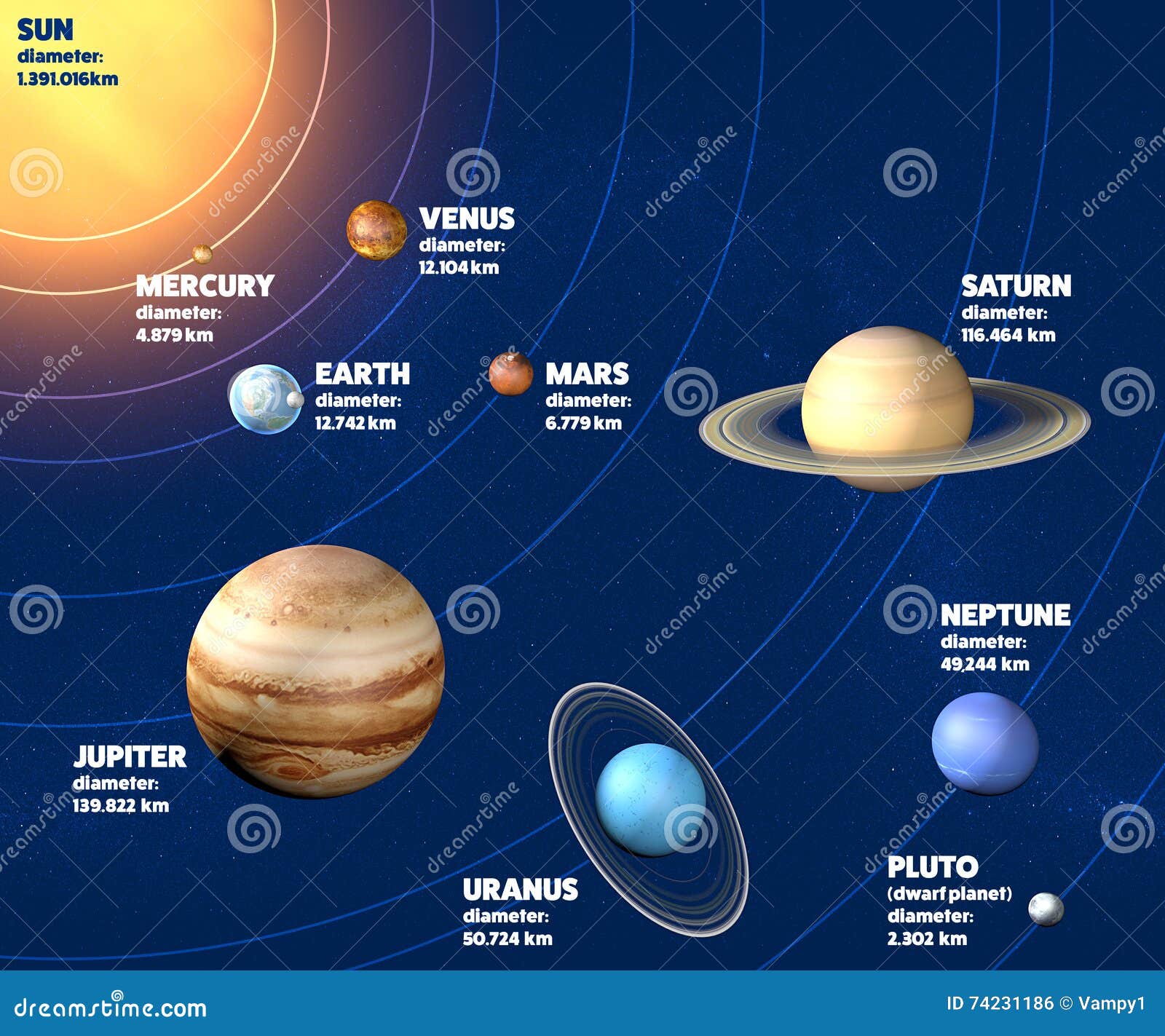
Solar System Diameter Stock Photography 74231186
Actual Size: 12,800 km (7,900 mi) diameter Scaled Size: 9.1 mm (0.36") Average distance from Sun: 1 AU Scaled Distance from Sun: 110 m (120 yd) (Approx. 110 Earth diameters will span the diameter of the Sun) Mercury Actual Size: 4,900 km (3,000 mi) diameter Scaled Size: 3.4 mm (0.14") Average distance from Sun: 0.4 AU Scaled Distance from Sun.
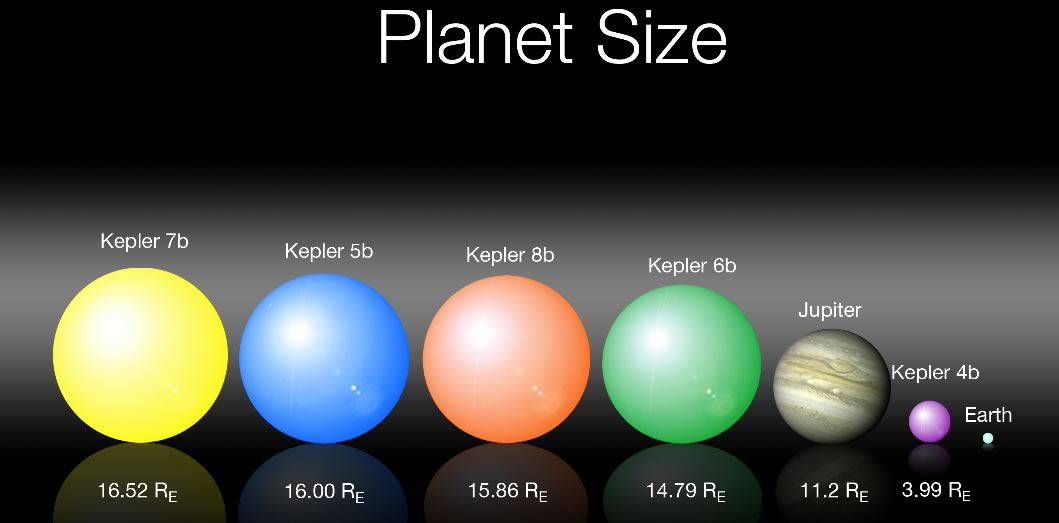
In Order Of Size List Images & Pictures Becuo
The planets' apparent size is measured in arcseconds ("). For comparison, the Sun and the Moon measure about 1800 arcseconds. Brightness. We measure the apparent brightness of celestial bodies in magnitude. The brighter a planet shines, the lower the magnitude value. Negative numbers indicate that the planet is very easy to spot in the night.
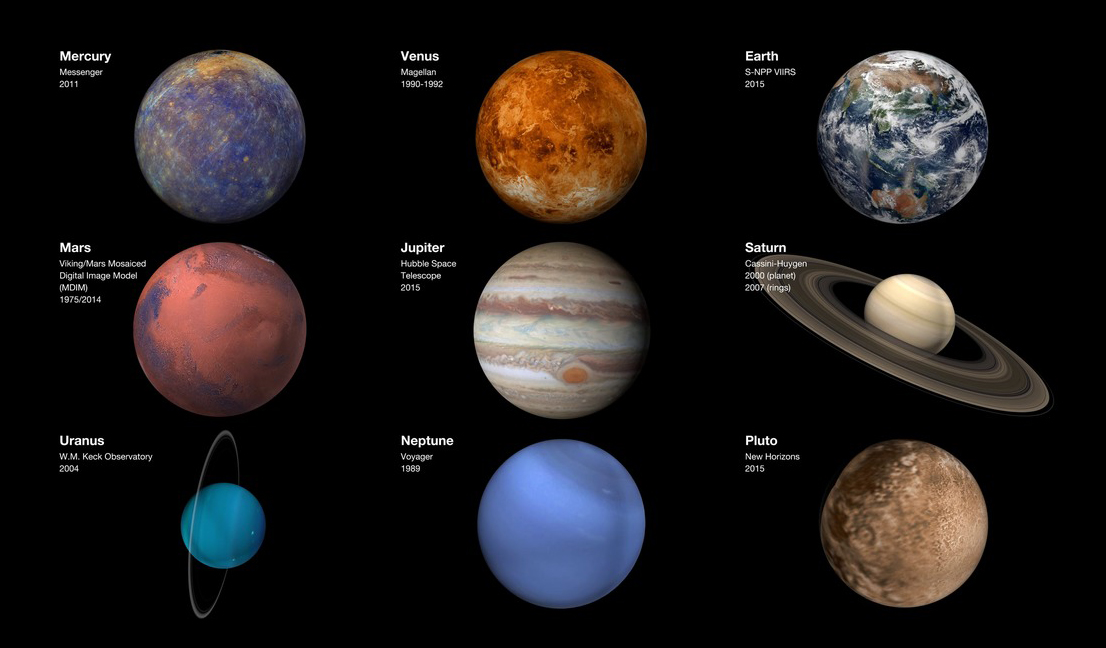
of the Solar System Scienceworks
All NASA Science Resources Solar System Sizes Contents The Solar System: Planet Sizes Downloads The Solar System: Planet Sizes Mercury - 1,516mi (2,440km) radius; about 1/3 the size of Earth Venus - 3,760mi (6,052km) radius; only slightly smaller than Earth Earth - 3,959mi (6,371km) radius

FileSolar SystemScaled Size & Scaled Distance.png Wikimedia Commons
How Big is Our Solar System? Our solar system is so big it is almost impossible to imagine its size if you use ordinary units like feet or miles. The distance from Earth to the Sun is 93 million miles (149 million kilometers), but the distance to the farthest planet Neptune is nearly 3 billion miles (4.5 billion kilometers).